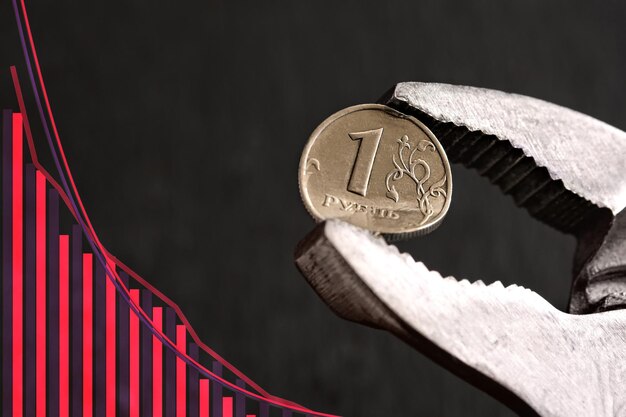The Importance of Understanding the Concept of Circulating Supply in Cryptocurrency and Its Impact on Market Dynamics
As we delve into the intricacies of the dynamic realm of virtual currencies, we encounter a concept that plays a vital role in evaluating their true value and potential: the ever-elusive circulating supply. In this article, we embark on a journey to unravel the significance and implications of this fundamental aspect without explicitly using any of the synonymous terms.
Imagine a bustling marketplace where cryptocurrencies are traded and exchanged. Each digital asset, with its distinct characteristics and utility, holds the promise of revolutionizing various industries. However, to truly grasp the overall picture, it is imperative for us to comprehend the core essence of a fundamental element, whose importance often goes unnoticed amidst the frenetic pace of this emerging technology.
Within this intricate web of virtual transactions, there exists a metric that embodies the quantity of units in circulation, guiding the trajectory of a cryptocurrency’s value. Holding a powerful sway over markets and investing decisions, this component serves as a window into the true potential of a digital asset. In order to fully comprehend the ecosystem, one must grasp this concept’s importance and unravel the implications it bears on the trajectory of the market.
Understanding the Relevance of Circulating Coins and Their Importance in the World of Digital Currency
Exploring the significance of circulating coins and their role within the realm of cryptocurrencies unlocks a deeper understanding of the dynamics at play in the digital financial landscape. These vital units of currency move freely within the cryptocurrency market, influencing its overall liquidity and value. By comprehending the concept of circulating coins and recognizing their importance, individuals can better navigate the complexities of this rapidly evolving industry.
What is Circulating Supply in Cryptocurrency?
In the world of cryptocurrency, the concept of circulating supply plays a crucial role in understanding the dynamics of a particular digital currency. It represents the total number of coins or tokens that are currently available for public trading and use. The term “circulating” implies that these coins or tokens are actively in circulation, being bought, sold, and exchanged in the market.
The circulating supply of a cryptocurrency can determine its overall market value and influence the demand and supply dynamics. It is an important metric for investors, traders, and enthusiasts to assess the potential growth and stability of a particular digital asset. By knowing the circulating supply, one can evaluate its scarcity, liquidity, and market distribution, which are key factors in determining the value of a cryptocurrency.
Considering the significance of circulating supply in cryptocurrency, it is crucial to understand its calculation. This metric is generally obtained by subtracting tokens held by the project team, locked or reserved tokens, and any other non-circulating supply from the total supply of coins or tokens. It is important to note that different cryptocurrencies may have varying methods of calculating circulating supply. Therefore, it is essential to research each individual project’s methodology to gain a comprehensive understanding of their circulating supply.
Furthermore, circulating supply also has implications in various aspects of a digital currency’s ecosystem. It can impact the price stability, market capitalization, and also influence the potential inflation or deflation of the cryptocurrency. Furthermore, it can affect the participation and interest of investors and traders in a particular project, as a higher circulating supply could indicate a lower value per coin or token.
In conclusion, the concept of circulating supply in cryptocurrency refers to the total number of coins or tokens actively in circulation and available for public trading. It plays a significant role in determining the value and dynamics of a digital asset, and understanding its calculation is crucial for assessing the potential growth and stability of a cryptocurrency.
The Difference between Circulating Supply and Total Supply
In the world of cryptocurrency, understanding the distinction between circulating supply and total supply is essential for investors and enthusiasts. While both terms pertain to the quantity of digital assets available, they hold different meanings and implications. By grasping the disparities between circulating supply and total supply, individuals can gain deeper insights into the market dynamics and make more informed decisions.
What is Circulating Supply?
Circulating supply refers to the number of coins or tokens that are currently in circulation and available for trading in the market. These are the digital assets that have already been issued by the cryptocurrency project and are held by investors, traders, and users. Circulating supply excludes coins or tokens that are locked, reserved for specific purposes, or held by the project team. It represents the portion of the total supply that is actively participating in the cryptocurrency ecosystem.
Understanding Total Supply
Total supply, on the other hand, encompasses the entire quantity of coins or tokens that have been created or will be created by the cryptocurrency project. It includes not only the circulating supply but also any coins or tokens that are locked, reserved, or held by the project team. Total supply provides a comprehensive view of the maximum potential number of digital assets that can ever exist within the ecosystem, regardless of whether they are actively circulating in the market or not.
By comparing the circulating supply and total supply, investors can assess the scarcity and potential liquidity of a particular cryptocurrency. A low circulating supply relative to the total supply may indicate higher demand and price appreciation prospects, while a high circulating supply may suggest a more saturated market with potentially limited upward price movement.
- It is important to note that circulating supply can vary over time as new coins or tokens are released into the market or existing ones are burned or destroyed. These changes can affect the overall market dynamics and investment considerations.
- Furthermore, the ratio between circulating supply and total supply can influence factors such as market capitalization, token distribution, and project sustainability, making it a crucial metric to assess the health and potential of a cryptocurrency.
In conclusion, understanding the difference between circulating supply and total supply in the cryptocurrency world provides valuable insights into the market dynamics, scarcity, and potential liquidity of digital assets. By considering these factors, investors can make more informed decisions and navigate the ever-changing landscape of cryptocurrencies.
How Circulating Supply Impacts the Market Value of Cryptocurrencies
Cryptocurrencies are subject to the influence of various factors that impact their market value. One such factor is the circulating supply of a cryptocurrency, which plays a crucial role in determining its market value. The circulating supply refers to the total number of coins or tokens that are actively circulating in the market at any given time. Understanding how the circulating supply affects the market value of cryptocurrencies is essential for investors and enthusiasts alike.
Scarcity and Demand: The circulating supply of a cryptocurrency directly affects its scarcity, which, in turn, influences its demand in the market. When the circulating supply of a cryptocurrency is limited, it creates a sense of scarcity, making the coins or tokens more valuable. This scarcity often leads to increased demand from investors and can drive up the market value of the cryptocurrency.
Market Perception and Confidence: The circulating supply of a cryptocurrency also impacts market perception and confidence. A larger circulating supply may indicate a higher availability of the cryptocurrency, potentially leading to lower perceived value. On the other hand, a smaller circulating supply can create a perception of a more exclusive and sought-after asset, positively influencing market sentiment and confidence.
Liquidity and Market Stability: The circulating supply of a cryptocurrency plays a crucial role in determining its liquidity and market stability. A higher circulating supply generally indicates a higher level of liquidity, as there are more coins or tokens available for trading. This increased liquidity can contribute to a more stable market, as there is a larger pool of assets to facilitate buying and selling activities.
Competition and Market Share: The circulating supply of a cryptocurrency can also impact its competitiveness and market share within the broader cryptocurrency market. A lower circulating supply may position a cryptocurrency as more unique and distinctive, potentially attracting more attention and investment. Conversely, a higher circulating supply could make it more challenging for a cryptocurrency to stand out or gain significant market share.
Economic Factors: The circulating supply of a cryptocurrency can be influenced by economic factors such as mining rewards, token distribution models, and coin burn mechanisms. These factors can directly impact the circulating supply and, consequently, the market value of a cryptocurrency. Understanding the economic dynamics surrounding the circulating supply is crucial for assessing a cryptocurrency’s long-term sustainability and potential for growth.
In conclusion, the circulating supply of a cryptocurrency has a significant impact on its market value. It affects factors such as scarcity, demand, market perception, liquidity, competitiveness, and economic dynamics. Investors and enthusiasts should consider the circulating supply when analyzing the potential of a cryptocurrency and its ability to gain market traction.
The Role of Circulating Supply in Price Volatility
When examining the dynamics of cryptocurrency markets, it becomes evident that the circulating supply plays a significant role in determining price volatility. The availability and distribution of coins or tokens in the market directly impact the buying and selling pressure, thereby influencing price fluctuations.
Circulating supply refers to the total number of coins or tokens available to the public for trading. It represents the portion of the total supply that has been mined, minted, or issued and is actively circulating within the market. Understanding the relationship between circulating supply and price volatility is crucial for investors and traders seeking to make informed decisions.
- Market Dynamics: The size of the circulating supply affects the supply and demand equilibrium within the cryptocurrency market. A large circulating supply can lead to lower prices due to higher availability, while a limited supply may result in a scarcity-driven increase in prices.
- Investor Sentiment: Circulating supply also influences investor sentiment and perception of value. When there is a high circulating supply of a cryptocurrency, investors may perceive it as less valuable, resulting in lower demand and potential price depreciation.
- Liquidity and Trading Volume: The circulating supply determines the liquidity and trading volume of a cryptocurrency. Larger circulating supplies generally indicate higher liquidity, enabling easier buying and selling, which may contribute to increased price stability.
- Market Manipulation: The circulating supply can be manipulated by certain market participants, leading to price manipulation. This can be done through actions such as artificially reducing or increasing the circulating supply to create scarcity or flood the market, respectively, resulting in price manipulation.
- Token Economics: Circulating supply is intimately connected to a cryptocurrency’s token economics. Factors such as inflation rates, token issuance schedules, and mechanisms for token distribution can impact the circulating supply and, consequently, the price volatility.
Overall, understanding the role of circulating supply in price volatility is essential for cryptocurrency market participants. It provides insights into the market dynamics, investor sentiment, liquidity, potential market manipulation, and token economics, enabling individuals to make more informed decisions when trading or investing in cryptocurrencies.
Circulating Supply and its Impact on Market Liquidity
In the realm of cryptocurrency, the circulating supply plays a crucial role in determining the market liquidity. Market liquidity refers to the ease with which a cryptocurrency can be bought or sold. It is influenced by factors such as the total number of coins in circulation, trading volume, and the demand from investors.
Understanding Circulating Supply
Circulating supply refers to the total number of coins or tokens that are readily available for trading in the cryptocurrency market. It excludes coins that are locked or reserved for specific purposes, such as those held by the development team, or coins that have been burned or destroyed.
When it comes to market liquidity, circulating supply becomes a vital factor. The higher the circulating supply, the greater the chances of finding buyers and sellers in the market, leading to increased trading activity and higher liquidity. On the other hand, a lower circulating supply can create scarcity, potentially driving up the price as demand surpasses the limited supply.
The Impact on Market Liquidity
The circulating supply directly affects the market liquidity of a cryptocurrency. A larger circulating supply generally leads to better market liquidity, as there are more coins available for trading. This allows traders and investors to buy or sell their holdings without significant price impact, as there is a larger pool of coins to fulfill their orders.
Additionally, a higher circulating supply can also attract more institutional investors and market makers, as they prefer cryptocurrencies with higher liquidity. These entities often participate in high-volume trading, and a larger circulating supply ensures that their trades can be executed smoothly without causing significant price fluctuations.
However, it is important to note that market liquidity is not solely determined by circulating supply. Other factors, such as trading volume, order book depth, and the overall market sentiment, also play crucial roles. These factors can influence market liquidity independently or interact with the circulating supply to determine the overall trading environment of a cryptocurrency.
| Circulating Supply | Impact on Market Liquidity |
|---|---|
| A larger circulating supply | Increased trading activity and higher liquidity |
| A lower circulating supply | Scarcity and potential price increase |
| Attractiveness to institutional investors | Preference for cryptocurrencies with higher liquidity |
| Other factors | Trading volume, order book depth, market sentiment, etc. |
In conclusion, the circulating supply of a cryptocurrency has a significant impact on its market liquidity. It determines the availability of coins for trading and influences the ease of buying or selling within the market. Although circulating supply is an essential factor, it works in conjunction with other aspects of market dynamics to ultimately shape the trading environment of a cryptocurrency.
The Significance of Circulating Supply for Investors and Traders
When it comes to the world of cryptocurrencies, investors and traders often find themselves closely analyzing a variety of factors before making any investment decisions. Among these factors, the circulating supply of a cryptocurrency holds great significance and plays a crucial role in shaping the market.
Investors and traders understand that the circulating supply refers to the total number of coins or tokens that are currently in circulation and available for trading in the market. This metric is an essential piece of information that can provide insights into the liquidity, demand, and future value of a cryptocurrency.
By having a clear understanding of a cryptocurrency’s circulating supply, investors and traders can assess the potential risks and rewards associated with their investment choices. A higher circulating supply might indicate a larger market-cap and potentially greater liquidity, but it could also lead to dilution of value if the demand doesn’t keep up. On the other hand, a lower circulating supply might suggest scarcity and potential future value appreciation, but it could also result in higher volatility and difficulty in buying or selling large amounts.
Additionally, analyzing the circulating supply can help investors and traders gauge the impact of token releases, such as those from initial coin offerings (ICOs) or scheduled token unlocks. Understanding when and how new coins or tokens enter the market can provide valuable insights into potential shifts in supply and demand dynamics.
Furthermore, the circulating supply can also be used as a comparative metric to assess the performance and market positioning of different cryptocurrencies. For instance, comparing the circulating supply of two similar cryptocurrencies can help investors and traders determine which one might have a higher growth potential or offer better investment opportunities.
In conclusion, the significance of circulating supply for investors and traders in the world of cryptocurrency cannot be overlooked. By analyzing and understanding this metric, individuals can make informed investment decisions, take advantage of market trends, and potentially maximize their returns. It serves as a valuable tool in evaluating the strength and potential of a cryptocurrency within the dynamic crypto landscape.
Questions and answers: Circulating supply
What is circulating supply in cryptocurrency?
Circulating supply in cryptocurrency refers to the total number of coins or tokens that are currently in circulation and available to the public.
Why is circulating supply important for cryptocurrencies?
Circulating supply is important for cryptocurrencies because it helps determine the market capitalization and price of a coin or token. It also gives investors an idea of the number of coins that are actively being traded in the market.
How is circulating supply different from total supply?
Circulating supply is the number of coins or tokens that are available to the public and actively being traded. Total supply, on the other hand, includes not only the circulating supply but also any coins or tokens that are locked, reserved, or held by the project team.
Can the circulating supply of a cryptocurrency change over time?
Yes, the circulating supply of a cryptocurrency can change over time. It can increase if additional coins or tokens are released into circulation, or it can decrease if coins or tokens are burned, locked, or removed from circulation.
What is the significance of understanding circulating supply for investors?
Understanding circulating supply is significant for investors as it can affect the liquidity, price stability, and potential future growth of a cryptocurrency. It can also provide insights into the level of decentralization and control of the project team over the token’s supply.
What is circulating supply in cryptocurrency?
Circulating supply in cryptocurrency refers to the total number of coins or tokens that are actively circulating in the market. These are the coins or tokens that are available for trading, buying, or selling at any given moment.
Why is circulating supply important in cryptocurrency?
Circulating supply is important in cryptocurrency because it helps determine the market capitalization of a particular cryptocurrency. It also provides insight into the scarcity or abundance of a specific cryptocurrency, which can affect its value and market dynamics.
What factors determine the market cap of Bitcoin?
The market cap of Bitcoin is determined by multiplying the current price of a single BTC by its circulating supply, which refers to the total number of publicly available and circulating Bitcoin.
How is the circulating supply of Bitcoin defined?
The circulating supply of Bitcoin refers to the total number of Bitcoin coins or tokens that are publicly available and circulating in the market.
What is the significance of the maximum supply of Bitcoin?
The maximum supply of Bitcoin is hard-coded into its blockchain protocol, with a cap set at 21 million coins. This ensures that Bitcoin remains deflationary, as there will never be more than 21 million BTC in existence.
How does the circulating supply impact the market cap of Bitcoin?
The market cap of Bitcoin would increase with an increase in its circulating supply, reflecting a higher valuation based on the multiplied current price and the total number of publicly available Bitcoin coins or tokens.
What is the relationship between the circulating supply and inflationary/deflationary characteristics of Bitcoin?
The circulating supply of Bitcoin contributes to its deflationary nature, as the supply is capped at 21 million coins, leading to a decrease over time due to factors like lost coins or token burn events.
How does the concept of token burn events relate to the circulating supply of cryptocurrencies like Shiba Inu?
Token burn events involve permanently removing coins from circulation, reducing the circulating supply and potentially increasing the value of existing coins by making them scarcer.
Why is it important for crypto investors to assess the circulating supply of cryptocurrencies like Bitcoin?
Assessing the circulating supply of cryptocurrencies is crucial for investors to understand the potential impact on the coin’s value, liquidity, and inflationary or deflationary characteristics.
What role does the halving mechanism play in the circulating supply and valuation of Bitcoin?
The halving mechanism reduces the rate at which new Bitcoins are created, gradually decreasing the supply and potentially increasing the value of existing coins due to increased scarcity.
How can the circulating supply of a cryptocurrency be calculated?
The circulating supply of a cryptocurrency can be calculated by multiplying the current price of a single coin by the total number of coins or tokens available in circulation.
What factors should be considered when quantifying the circulating supply of a cryptocurrency?
When quantifying the circulating supply of a cryptocurrency, factors such as lost coins, token burn events, inflationary or deflationary characteristics, and the impact on valuation should be taken into account.







No responses yet